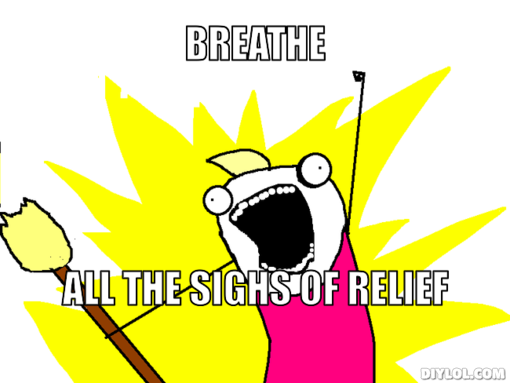Aside from the strike (and missing a month's worth of quizzes), it's been a crazy ten weeks. All that's left is to (hopefully) bring up my mark in Assignment 3 and the final exam.
What I loved about A3 was that there were two options for students to choose from: the harder (minimax) option or the easier option. My group opted for the latter option. I found it extremely generous, given that my partner and I did not work our minimax the way it should be last time.
I've been re-reading my previous SLOG posts numerous times. Here, I try to explain concepts from the previous week for myself and for other people. That way, I can increase my understanding a bit, but it doesn't imply that my head hasn't stopped spinning completely. I understand recursion a bit better now that I've seen it numerous times, but there's still room for improvement. I want to take my understanding to the next level. In other words, I want to try and become a recursion master!
I am, however, pleased to say that my writing keeps getting better each time I write a SLOG entry. As I said before, a SLOG is a good way to practice writing. There is a justification that writing is an essential skill that geeks must have; writing is a form of expression. Also, there's a good reason CS students need to take CSC165. A significant part of the course deals with mathematical expression, which includes Big-O. We do tons of writing in that course, except not completely with Python. We practice things such as proof writing and logical notation. It may be hard at first, but with repetition and proper guidance, it will all be better.
As well, when I was working on assignments and labs, I wrote comments to help me further understand how the code works. This person speaks about adding comments in Python. They can definitely be helpful when it's time to review.
The course setup somewhat reminds me of CSC108 such that we receive weekly worksheets as in-class exercises for mastery of the upcoming concept. We take these worksheets up after a couple of seconds or minutes, depending on how much time Prof. Heap allots to us. They are used to train us in the art of reading and writing code on paper, which I struggled with greatly in the CSC108 midterm and exam. Nevertheless, help is there when I need it.
Comparing my experience to Saima's, I, too, understand things at a conceptual level rather than at a practical level (implementing code). Before the exam, I'll keep doing what I'm doing, which is reaching out for help whenever possible and not having too much anxiety.
I do try to ask questions and practice the concepts, but I need to catch up on the labs because I haven't worked on them due to assignments from other courses.
Well, we're almost there. I swear we started CSC148 yesterday. My group will complete A3 and I will begin reviewing for my exams.
Best of luck in the final moments of CSC148, everyone! We can do this!
Last, but not least, here's a positive photo.













